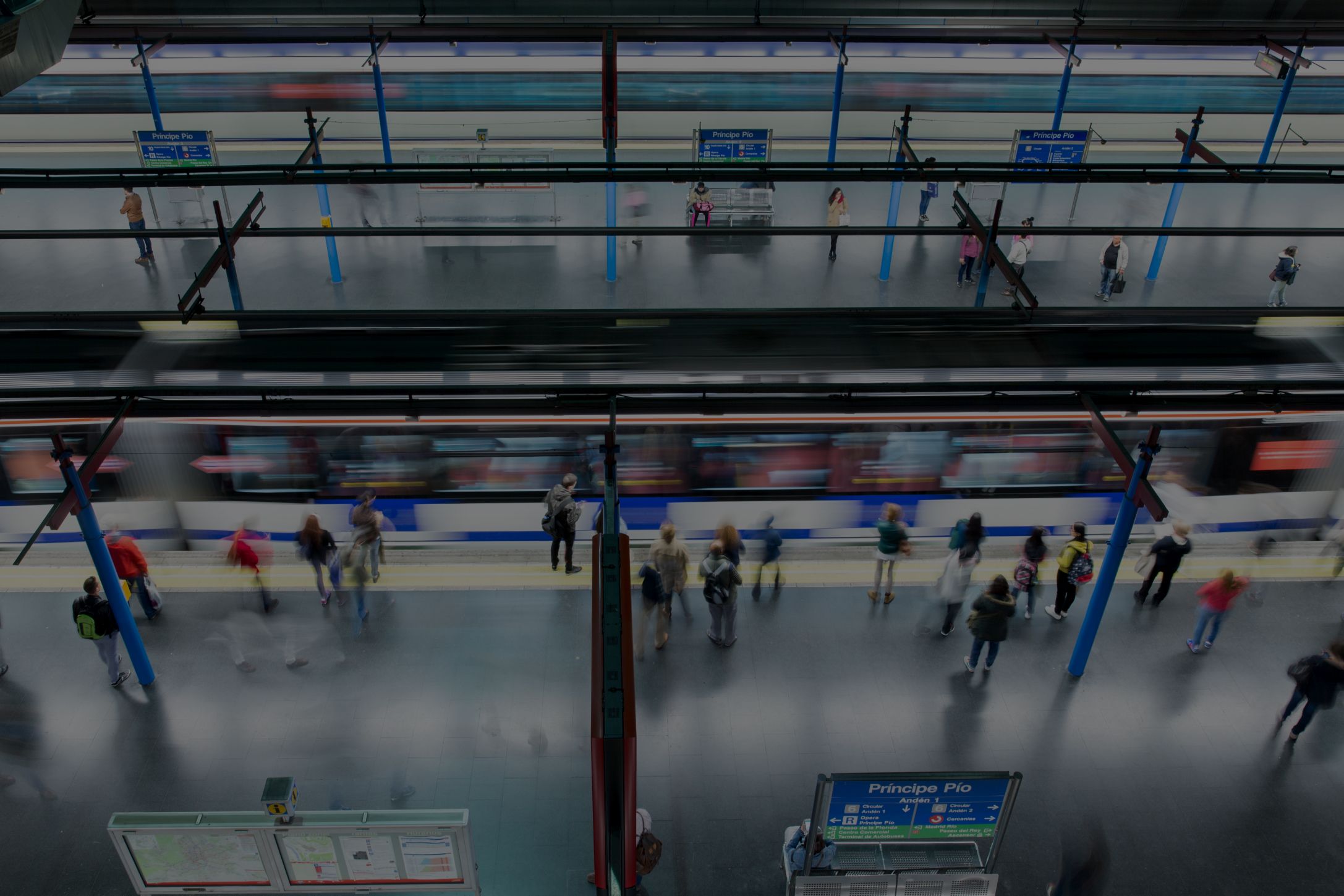The Challenges of Urban Mobility
Urban mobility has been one of the most exciting challenges for major cities for decades. Population growth and urban expansion have led to a significant increase in the demand for public transport.
Unless cities are equipped with the necessary public transport infrastructure, as they grow, so too does the number of vehicles on the roads. This results in congestion in urban centres, pollution, and ultimately a decline in the quality of life for citizens.
Faced with this scenario, urban and suburban mass transit systems emerge as the most efficient solutions, aiding in the expansion of cities without compromising the quality of life of their inhabitants.
Mass urban transport systems allow for a much greater number of people to be moved per unit of space, thereby reducing the volume of private cars on the roads.
Suburban transport systems, which link metropolitan areas with the suburbs, have become a key component in modernising urban transport. Their implementation reduces the need for private cars to enter cities, offering significant advantages in terms of mobility and reducing urban congestion.
Public Transport Challenges
Traffic congestion is one of the most visible and costly problems. According to data from the European Commission, congested traffic costs the European economy approximately 1% of its GDP annually, due to lost time and increased fuel consumption. Moreover, air pollution from transport is one of the main sources of CO2 emissions and other harmful pollutants.
Investing in upgrading infrastructure to improve transport efficiency means making responsible use of public resources. Having a modern network that promotes mobility leads to smoother traffic flow and an increase in the number of passengers opting for these services, thus boosting the return on investment.
Simply put, urban and suburban transport plays a crucial role in mitigating these problems. Unlike other modes of transport, the metro has the capacity to move a large number of passengers quickly and efficiently within cities, reducing the use of private vehicles, and thus easing traffic congestion and cutting emissions. Furthermore, by connecting the outskirts with urban centres, it helps reduce urban density, relieving pressure on the most densely populated metropolitan areas.
The design of urban and suburban railway lines also allows for greater flexibility in terms of expansion and adaptation to the changing needs of the population. Territorial planning ensures that expansions of urban and suburban railway lines can be undertaken in a planned manner, in tandem with city extensions, creating modern and sustainable neighbourhoods where the quality of life of residents is the top priority.
Additionally, urban transport is among the safest in the world, thanks to its robust infrastructure, advanced monitoring and control systems, and highly trained personnel. Unlike cars, where accidents are frequent, rail transport provides a controlled environment, significantly reducing the risk of incidents. This mode of transport ensures the safety and confidence of millions of passengers every day.
The CBTC Revolution
One of the most innovative technologies transforming urban transport is Communications-Based Train Control (CBTC). This advanced railway signalling system allows for more efficient and safer train operations, significantly improving capacity, reliability, and service quality.
CBTC enables trains to run more frequently and closer together, as each train can detect its position safely and communicate it to the zone controller, which then instructs all trains on the necessary movements. This allows for an increase in the transport capacity of a railway line compared to traditional systems based on fixed block signalling.
To achieve this, CBTC uses secure digital communications. Indeed, cybersecurity in critical infrastructure has become a societal priority, making it essential for communications-based signalling systems to adopt the latest techniques in this field.
In addition to improving capacity, CBTC also provides substantial benefits in terms of reducing operating and maintenance costs. By minimising the need for physical signalling infrastructure, such as signals or trackside equipment, CBTC systems are less expensive to maintain and upgrade. This lowers long-term operational costs for railway operators and reduces service disruptions during maintenance.
CBTC significantly enhances safety. Through continuous, real-time communication between trains and the central control system, CBTC enables precise management of distance and speed between trains, reducing the risk of collisions. Additionally, it optimises response to emergencies and technical failures, ensuring constant and efficient monitoring.
Integration of Suburban Transport and CBTC
The use of CBTC systems in urban transport creates a mobility network that is not only efficient and sustainable but also adaptable to future needs. Cities that have already implemented this combination have seen notable improvements in service frequency, timetable accuracy, and operational reliability, leading to increased user satisfaction.
The implementation of CBTC, for example, can increase capacity by 30% and significantly reduce passenger waiting times, according to data from cities that have already adopted it. This improvement in the performance of urban systems encourages more people to choose public transport, while also significantly reducing congestion on urban roads. Furthermore, when CBTC is implemented at levels of automation where the system itself controls the train's speed in real time and adjusts to schedules with great precision, energy savings of up to 20% can be achieved, further contributing to urban sustainability.
Ultimately, suburban transport and CBTC technology represent key solutions to the urban mobility challenges faced by smart cities. By providing substantial improvements in efficiency and sustainability, and by leveraging advanced signalling technologies, cities can significantly enhance the quality of life for their inhabitants while also reducing their ecological footprint. Modernising urban transport requires not only infrastructure but also technological innovation and strategic planning.
At CAF, as leaders in the railway sector with over a century of experience, we drive these advancements by providing innovative solutions that help cities effectively tackle urban mobility challenges with a forward-looking approach. OPTIO is our CBTC solution that addresses these new needs in major cities.

 .
.